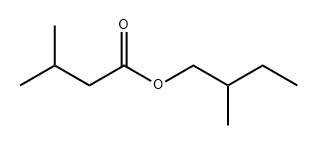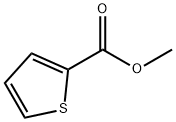Methyl isovalerate
- CAS NO.:556-24-1
- Empirical Formula: C6H12O2
- Molecular Weight: 116.16
- MDL number: MFCD00042866
- EINECS: 209-117-3
- SAFETY DATA SHEET (SDS)
- Update Date: 2024-12-18 14:15:30

What is Methyl isovalerate?
Description
Methyl isovalerate has a strong, pungent, apple-like odor and a bitter flavor. It may be prepared by esterification of isovaleric acid with methyl alcohol at the boil in the presence of concentrated H2SON4.
Chemical properties
clear slightly yellow liquid
Chemical properties
Methyl isovalerate has a strong, pungent, apple-like odor and a bitter flavor. This compound is also reported to have an herbaceous, fruity odor.
Occurrence
Reported found in the juice of a few varieties of Florida oranges, pineapple, apple, banana, bilberry, blueberry, strawberry, melon, peas, peppermint oil, pepper, blue, Gruyere and parmesan cheese, coffee, honey, olive, mushroom, jackfruit, cherimoya, sage, custard apple, nectarine, lamb’s lettuce and cape gooseberry
The Uses of Methyl isovalerate
Isovaleric Acid Methyl Ester is a volatile compound found in Albion and Juliette strawberry fruits that contributes to the flavor of the fruit.
Preparation
By esterification of isovaleric acid with methyl alcohol at the boil in the presence of concentrated H2SO4.
Definition
ChEBI: Methyl 3-methylbutanoate is a fatty acid ester.
Aroma threshold values
Detection: 4.4 to 44 ppb
Taste threshold values
Taste characteristics at 80 ppm: fruity, pineapple, apple with a juicy, fruit-like nuance
Synthesis Reference(s)
Tetrahedron Letters, 8, p. 4805, 1967 DOI: 10.1016/S0040-4039(01)89607-6
General Description
A colorless liquid. Flash point below 70°F. Less dense than water and insoluble in water. Vapors heavier than air. May be slightly toxic by ingestion and inhalation. Used to make other chemicals.
Air & Water Reactions
Highly flammable. Insoluble in water.
Reactivity Profile
Methyl isovalerate is an ester. Esters react with acids to liberate heat along with alcohols and acids. Strong oxidizing acids may cause a vigorous reaction that is sufficiently exothermic to ignite the reaction products. Heat is also generated by the interaction of esters with caustic solutions. Flammable hydrogen is generated by mixing esters with alkali metals and hydrides.
Health Hazard
May cause toxic effects if inhaled or absorbed through skin. Inhalation or contact with material may irritate or burn skin and eyes. Fire will produce irritating, corrosive and/or toxic gases. Vapors may cause dizziness or suffocation. Runoff from fire control or dilution water may cause pollution.
Fire Hazard
HIGHLY FLAMMABLE: Will be easily ignited by heat, sparks or flames. Vapors may form explosive mixtures with air. Vapors may travel to source of ignition and flash back. Most vapors are heavier than air. They will spread along ground and collect in low or confined areas (sewers, basements, tanks). Vapor explosion hazard indoors, outdoors or in sewers. Runoff to sewer may create fire or explosion hazard. Containers may explode when heated. Many liquids are lighter than water.
Properties of Methyl isovalerate
| Melting point: | -91°C (estimate) |
| Boiling point: | 114-115 °C (lit.) |
| Density | 0.881 g/mL at 25 °C (lit.) |
| refractive index | n |
| FEMA | 2753 | METHYL ISOVALERATE |
| Flash point: | 58 °F |
| solubility | soluble in Chloroform, Ethyl Acetate |
| form | neat |
| color | Colorless to Almost colorless |
| Specific Gravity | 0.88 |
| Odor | at 10.00 % in dipropylene glycol. strong apple fruity pineapple |
| Odor Threshold | 0.0022ppm |
| Water Solubility | insoluble |
| JECFA Number | 195 |
| Merck | 14,6093 |
| BRN | 1699922 |
| CAS DataBase Reference | 556-24-1(CAS DataBase Reference) |
| NIST Chemistry Reference | Butanoic acid, 3-methyl-, methyl ester(556-24-1) |
| EPA Substance Registry System | Butanoic acid, 3-methyl-, methyl ester (556-24-1) |
Safety information for Methyl isovalerate
| Signal word | Danger |
| Pictogram(s) |
 Flame Flammables GHS02 |
| GHS Hazard Statements |
H225:Flammable liquids |
| Precautionary Statement Codes |
P210:Keep away from heat/sparks/open flames/hot surfaces. — No smoking. |
Computed Descriptors for Methyl isovalerate
New Products
(S)-3-Aminobutanenitrile hydrochloride 4-Methylphenylacetic acid N-Boc-D-alaninol N-BOC-D/L-ALANINOL Tert-butyl bis(2-chloroethyl)carbamate 3-Morpholino-1-(4-nitrophenyl)-5,6-dihydropyridin- 2(1H)-one Furan-2,5-Dicarboxylic Acid Tropic acid 1-Bromo-3,5-Di-Tert-Butylbenzene S-2-CHLORO PROPIONIC ACID ETHYL ISOCYANOACETATE 2-Bromo-1,3-Bis(Dimethylamino)Trimethinium Hexafluorophosphate 4-IODO BENZOIC ACID 3-NITRO-2-METHYL ANILINE 1-(2,4-DICHLOROPHENYL) ETHANAMINE (2-Hydroxyphenyl)acetonitrile 4-Bromopyrazole 2-(Cyanocyclohexyl)acetic acid 4-methoxy-3,5-dinitropyridine 1-(4-(aminomethyl)benzyl)urea hydrochloride 2-aminopropyl benzoate hydrochloride diethyl 2-(2-((tertbutoxycarbonyl)amino) ethyl)malonate tert-butyl 4- (ureidomethyl)benzylcarbamate Ethyl-2-chloro((4-methoxyphenyl)hydrazono)acetateRelated products of tetrahydrofuran








You may like
-
 Methyl isovalerate CAS 556-24-1View Details
Methyl isovalerate CAS 556-24-1View Details
556-24-1 -
 Methyl Isovalerate CAS 556-24-1View Details
Methyl Isovalerate CAS 556-24-1View Details
556-24-1 -
 Methyl isovalerate CAS 556-24-1View Details
Methyl isovalerate CAS 556-24-1View Details
556-24-1 -
 1975-50-4 98%View Details
1975-50-4 98%View Details
1975-50-4 -
 2-HYDROXY BENZYL ALCOHOL 98%View Details
2-HYDROXY BENZYL ALCOHOL 98%View Details
90-01-7 -
 2-Chloro-1,3-Bis(Dimethylamino)Trimethinium Hexafluorophosphate 221615-75-4 98%View Details
2-Chloro-1,3-Bis(Dimethylamino)Trimethinium Hexafluorophosphate 221615-75-4 98%View Details
221615-75-4 -
 14714-50-2 (2-Hydroxyphenyl)acetonitrile 98+View Details
14714-50-2 (2-Hydroxyphenyl)acetonitrile 98+View Details
14714-50-2 -
 118753-70-1 98+View Details
118753-70-1 98+View Details
118753-70-1